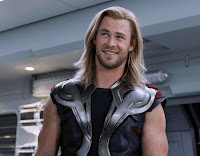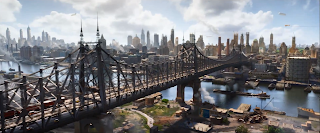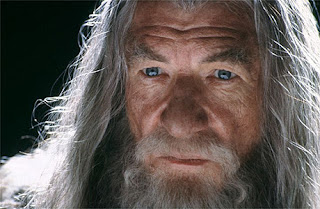
Labels
- Construction (1)
- Evaluation Questions (7)
- Preliminary exercise (7)
- Research and planning (32)
Tuesday, 25 December 2012
Research into film companies logos
Tania has done some research into film companies logos. I found this a very useful images that Tania created as we can compare the different companies and their logos to see which is more eye catching and individual.

Thursday, 13 December 2012
Edited production logo
I have edited the original logo made by Tania. I started by smoothing and changing the colour of the production ribbon and tried to make the colours of the earth a lot smoother.
Thursday, 29 November 2012
Thursday, 22 November 2012
Wednesday, 7 November 2012
Edward Scissorhand (1990) Film opening review
This video is of the opening scenes to the 1990 film
Edward Scissorhands all of titles are in a strange gothic font. Which looks
very sharp and mysterious The only title that is different is title 4 This is
the main title which is Edward Scissorhands, it appears on the screen with a
fast swooping action and then exits as if it is being torn apart or
opend like a pair of scissors. Each of the titles gives us different
information such as:
the cast
music by Danny Elfman
Casting by
costume designer
special make-up and Scissorhands
edited by
production designer
Director of photography
executive producer
story by Tim Burton
screenplay
produced by
and as always the director last
The color of the titles are white which stands out against
the dark blue and black background which could be sign of the film also being
dark, gloomy and mysterious. This draws attention to it.
Monday, 5 November 2012
Wednesday, 24 October 2012
Evaluation of seven film opening
In the first 3 minutes of the film Seven, it is made clear the genre of the film is thriller. This is because of the jumpy sketchy titles and how they quickly appear then disappear. We can also tell this through the use of the metrodome and then the music. This is because the metrodome causes tension and curiosity as it the the primary noise we hear then how it changes to the morbid eerie music that begins to play as the scene changes which also indicates it as a thriller as the scene is of graphic photos and its dull morbid colors The first scene hooks the viewer as the fast paced shots cause a lot of suspense. It causes a lot of questions such as 'who's making the book?' 'why is he making it?' 'did he kill those people?' this makes the viewer continue watching it to find this information out. The scene with Morgan freeman sitting in bed also helps to hook the viewer into watching the rest as it raises some interesting questions. Through this we can tell he will be a key character in the film but does not tell us his name or anything about him the only thing we know is he is in a modern american city due the traffic noise and the style of room he is in however we do not have a clear view of where the other person is situated.
Wednesday, 10 October 2012
Preliminary Exercise (Finished Piece)
Our preliminary exercise didn't exactly go smoothly. Firstly we could not agree on an opening shot but we eventually decided how to approach it and how we wanted it to go. I did make a little error that none of us noticed until the editing stage but it is only minor.I enjoyed using the editing software the school has to offer but I was more than disappointed with the quality of camera provided.
Thursday, 4 October 2012
Codes and Conventions in Media
Codes and Conventions in Media
Codes:
Media students identify three categories of
codes that may be used to
convey meanings in media messages:
TECHNICAL
CODES, which
include camera techniques,
framing, depth of field,
Mise en
scene, editing, lighting
and sound;
SYMBOLIC
CODES,
which
refer to objects, setting, body language,
clothing and colour.
WRITTEN
CODES in the
form of
headlines,
captions, speech bubbles and language style.
Conventions:
There are general conventions in any medium, such as the use of quotes in a print article, but conventions are also genre specific. For example, in Westerns fights scenes are generally shot from a low angle, the setting is usually dusty and desolate, and even the sounds used within the scene are conventional, such as castonettes, or some sort of whistle.
Main exercise
Main exercise
The main titles and opening of a new fiction film, to last a maximum of two minutes.
My group consists of:
Aimee Griffin - http://asaimeegriffin.blogspot.co.uk/
Tania Pais - http://astaniapais.blogspot.co.uk/
Scott Marriott - http://as-scott-marriott.blogspot.co.uk/
Thursday, 20 September 2012
Starting the preliminary exercise
Starting the preliminary exercise
Today we started to film the preliminary exercise. The first 45 minutes did not go to plan as we could not decided on which shot would be better to shoot, so we did all of them. This wasted a lot of time but on the plus side it gives us more options for the final edit
Today we started to film the preliminary exercise. The first 45 minutes did not go to plan as we could not decided on which shot would be better to shoot, so we did all of them. This wasted a lot of time but on the plus side it gives us more options for the final edit
Sunday, 16 September 2012
Low angle shots
Low angle shots

A low angle shot is where the camera is low to the ground and is pointing up towards a character or object, this gives the effect that the object/person is physically bigger and intimidating. It could also give the effect that the character is dominant to another character in the room. Here is an example from the 2012 film The Avengers.

A low angle shot is where the camera is low to the ground and is pointing up towards a character or object, this gives the effect that the object/person is physically bigger and intimidating. It could also give the effect that the character is dominant to another character in the room. Here is an example from the 2012 film The Avengers.
Thursday, 13 September 2012
Establishing shots
Establishing shot
 Establishing shots are usually at the start of a film or the start of a new segment of a film to generally set the scene for the upcoming events. This can allow the viewer to get a feel for the surroundings and be able to understand the situation the characters are in. To the right there is an establishing shot from the trailer of The Great Gatsby.
Establishing shots are usually at the start of a film or the start of a new segment of a film to generally set the scene for the upcoming events. This can allow the viewer to get a feel for the surroundings and be able to understand the situation the characters are in. To the right there is an establishing shot from the trailer of The Great Gatsby.
 Establishing shots are usually at the start of a film or the start of a new segment of a film to generally set the scene for the upcoming events. This can allow the viewer to get a feel for the surroundings and be able to understand the situation the characters are in. To the right there is an establishing shot from the trailer of The Great Gatsby.
Establishing shots are usually at the start of a film or the start of a new segment of a film to generally set the scene for the upcoming events. This can allow the viewer to get a feel for the surroundings and be able to understand the situation the characters are in. To the right there is an establishing shot from the trailer of The Great Gatsby.
Long shot
Long shot
Long shots are used to show the backdrop and sometimes the characters as well, it often shows an impressive scenery or an important location for the film. The image to the right is a screenshot from the new Bond film Skyfall. This shows James Bond falling off of the bridge an plummeting to the ground below although this may not be visible in this image.
Long shots are used to show the backdrop and sometimes the characters as well, it often shows an impressive scenery or an important location for the film. The image to the right is a screenshot from the new Bond film Skyfall. This shows James Bond falling off of the bridge an plummeting to the ground below although this may not be visible in this image.
Mid/Medium shot
Close up
Close up

Close up's are used to show a character or object with more detail, this is usually to show a characters expression or specific detail on an object, Here is an example of a close up from the lord of the rings film.
As you can see, it is focused on his face and you can see his reaction clearly, unfortunately this screenshot has the background removed but nether the less you can still see that very little of the background is visible, this forces the viewer to look at the main focus and take in the information being shown.

Close up's are used to show a character or object with more detail, this is usually to show a characters expression or specific detail on an object, Here is an example of a close up from the lord of the rings film.
As you can see, it is focused on his face and you can see his reaction clearly, unfortunately this screenshot has the background removed but nether the less you can still see that very little of the background is visible, this forces the viewer to look at the main focus and take in the information being shown.
Continuity Mistakes
Continuity mistakes
Many things can class as continuity mistakes and many of those are very obvious and can be changed, for example hairstyles, clothing and props need to be kept the same. There is also the background to be careful of. There are many examples of poor continuity in this video.
Many things can class as continuity mistakes and many of those are very obvious and can be changed, for example hairstyles, clothing and props need to be kept the same. There is also the background to be careful of. There are many examples of poor continuity in this video.
Continuity
Continuity
Continuity is very important during a film or short clip, It is key to making a video look professional and overall better quality. Basically continuity is the continuous condition of the characters and props being used in the video, for example a character should be wearing the same clothes when he starts walking through a door and when he appears on the other side.
Continuity is very important during a film or short clip, It is key to making a video look professional and overall better quality. Basically continuity is the continuous condition of the characters and props being used in the video, for example a character should be wearing the same clothes when he starts walking through a door and when he appears on the other side.
Shot/ Reverse shot
Shot/Reverse shot
The shot /reverse shot is mainly used when two people are talking, the camera will change from above the listeners shoulder looking at the speaker, And then when the other character speaks the camera will change position to again face the speaker and being above the shoulder of the listener, an example of this is in the video to the right.
The shot /reverse shot is mainly used when two people are talking, the camera will change from above the listeners shoulder looking at the speaker, And then when the other character speaks the camera will change position to again face the speaker and being above the shoulder of the listener, an example of this is in the video to the right.
Match on action
Match on action
Match on action is where the camera changes view when an action happens, for example during this video the camera zooms in on the book when it is opened. Another example of this could be movement of the camera the swing of a bat or the zooming in of a hand on a door handle. These are used to emphasise and draw attention to item or action in the clip.
180 Degree rule
 |
| The 180 degree rule |
The 180 degree rule is simple enough to follow, the cameraman has just got to keep one side of the actors they are filming, I will give an example using the image to the right. If the cameraman was on the green side of the image to the right of the man with the yellow top he will have to draw an imaginary line through both of the actors (as displayed by the dotted line) he will know that he can't cross this line as it will change the direction the people are facing on the video.
Preliminary exercise brief
Produce a continuity exercise which involves a character opening a door, crossing a room and sitting down in a chair opposite another character, with whom they exchange a couple of lines of dialogue. The task should demonstrate;
- Match on action
- shot/reverse shot
- 180 degree rule
Subscribe to:
Posts (Atom)




